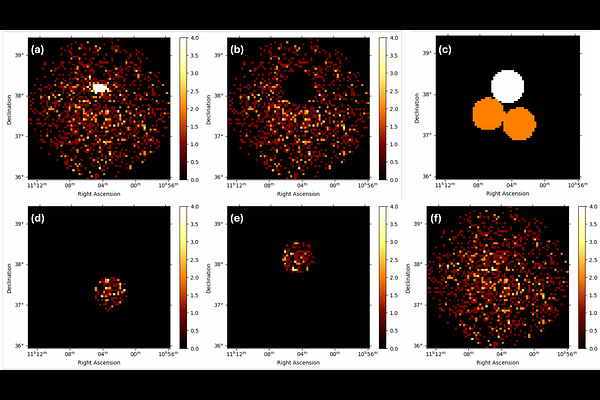Multiwavelength observation of a candidate pulsar halo LHAASO J0621+3755 and the first X-ray detection of PSR J0622+3749

Multiwavelength observation of a candidate pulsar halo LHAASO J0621+3755 and the first X-ray detection of PSR J0622+3749
C. B. Adams, A. Archer, P. Bangale, J. T. Bartkoske, W. Benbow, J. H. Buckley, Y. Chen, J. L. Christiansen, A. J. Chromey, A. Duerr, M. Errando, M. Escobar Godoy, A. Falcone, S. Feldman, Q. Feng, L. Fortson, A. Furniss, W. Hanlon, O. Hervet, C. E. Hinrichs, J. Holder, T. B. Humensky, W. Jin, M. N. Johnson, P. Kaaret, M. Kertzman, M. Kherlakian, D. Kieda, T. K. Kleiner, N. Korzoun, F. Krennrich, S. Kumar, S. Kundu, M. J. Lang, M. Lundy, G. Maier, M. J. Millard, J. Millis, C. L. Mooney, P. Moriarty, R. Mukherjee, W. Ning, R. A. Ong, A. Pandey, M. Pohl, E. Pueschel, J. Quinn, P. L. Rabinowitz, K. Ragan, P. T. Reynolds, D. Ribeiro, L. Rizk, E. Roache, I. Sadeh, L. Saha, G. H. Sembroski, R. Shang, M. Splettstoesser, D. Tak, A. K. Talluri, J. V. Tucci, J. Valverde, D. A. Williams, S. L. Wong, J. Woo, J. Kwong, K. Mori, C. J. Hailey, S. Safi-Harb, S. Zhang, N. Tsuji, S. Manconi, F. Donato, M. Di Mauro
AbstractPulsar halos are regions around middle-aged pulsars extending out to tens of parsecs. The large extent of the halos and well-defined central cosmic-ray accelerators make this new class of Galactic sources an ideal laboratory for studying cosmic-ray transport. LHAASO J0621+3755 is a candidate pulsar halo associated with the middle-aged gamma-ray pulsar PSR J0622+3749. We observed LHAASO J0621+3755 with VERITAS and XMM-Newton in the TeV and X-ray bands, respectively. For this work, we developed a novel background estimation technique for imaging atmospheric Cherenkov telescope observations of such extended sources. No halo emission was detected with VERITAS (0.3--10 TeV) or XMM-Newton (2--7 keV) within 1 degree and 10 arcmin around PSR J0622+3749, respectively. Combined with the LHAASO-KM2A and Fermi-LAT data, VERITAS flux upper limits establish a spectral break at ~1--10 TeV, a unique feature compared with Geminga, the most studied pulsar halo. We model the gamma-ray spectrum and LHAASO-KM2A surface brightness as inverse Compton emission and find suppressed diffusion around the pulsar, similar to Geminga. A smaller diffusion suppression zone and harder electron injection spectrum than Geminga are necessary to reproduce the spectral cutoff. A magnetic field <= 1 uG is required by our XMM-Newton observation and synchrotron spectral modeling, consistent with Geminga. Our findings support slower diffusion and lower magnetic field around pulsar halos than the Galactic averages, hinting at magnetohydrodynamic turbulence around pulsars. Additionally, we report the detection of an X-ray point source spatially coincident with PSR J0622+3749, whose periodicity is consistent with the gamma-ray spin period of 333.2 ms. The soft spectrum of this source suggests a thermal origin.